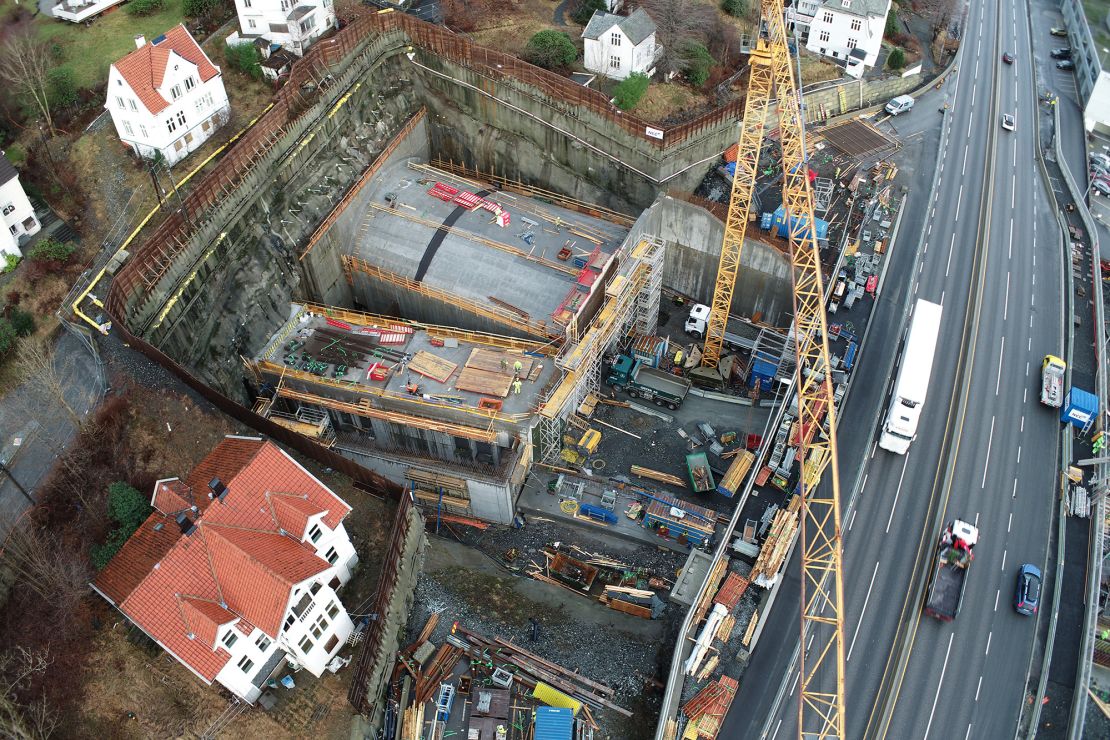Editor’s Note: Subscribe to Unlocking the World, UJ Travel’s weekly newsletter. Receive updates about newly opened destinations, inspiration for upcoming travels, along with the latest news in aviation, dining, accommodations, and other travel developments.
UJ
—
There are numerous ways to discover the seven mountains encircling the beautiful UNESCO World Heritage city of Bergen on Norway’s fjord-rich western coast. The newest option, however, may be setting records.
A three-kilometer-long (1.8-mile) cycling and pedestrian tunnel has been created through the base of Løvstakken mountain, touted as the longest tunnel specifically designed for this purpose.
Fyllingsdalstunnelen, as it is called, was inaugurated on April 15 with a family day filled with sports activities after four years of construction that commenced in February 2019. The state-supported mega-project cost nearly $29 million, or 300 million Norwegian kroner.
“We Norwegians tend to be humble,” Camilla Einarsen Heggernes, a spokesperson for the rail company Bybanen Utbygging, tells UJ, “but in this case, we can confidently say that the tunnel is 100% state of the art.”
Riding through the tunnel on a bike takes just under 10 minutes, while walking through it requires about 40 minutes. To alleviate the monotony of the tunnel’s windowless interiors, various art installations have been added, along with different colors and lighting to help visitors track their location and orientation.
In the middle of the tunnel is a “sundial” installation—despite the fact that sunlight will never reach it—that indicates the time of day, aiding visitor orientation and breaking the long line of sight. The tunnel, otherwise, is entirely straight, with only slight curves at the entrances and exits.
If you’re curious how cyclists and pedestrians share the same space, the tunnel features two lanes: a 3.5-meter-wide bicycle lane and a 2.5-meter-wide lane for walkers and runners. “We have installed blue rubber flooring throughout the tunnel, similar to that of an athletic track,” explains Einarsen Heggernes. “This creates a more comfortable experience than simply walking on asphalt.”

The new tunnel was developed as a result of Bergen’s second Bybanen tram line, which debuted in November 2022. The tram’s passage through the mountain necessitated a parallel evacuation tunnel, leading developers to repurpose the project for multiple uses.
Bergen, Norway’s second-largest city, is connected to Oslo, the capital, via the 496-kilometer Bergensbanen railway line. This breathtaking rail journey traverses Europe’s highest mountain plateau, the Hardangervidda, which served as the backdrop for the battle scenes in “Star Wars: The Empire Strikes Back.”
While Fyllingsdalstunnelen claims the title of the world’s longest purpose-built cycle tunnel, the qualifier arises due to the 3.6-kilometer Snoqualmie Tunnel in Washington, just east of Seattle. This former railway tunnel now serves as a thoroughfare for cyclists, runners, and pedestrians as part of the 250-mile Palouse to Cascades State Park Trail.
Six European cities were featured in UJ Travel’s recent list of the world’s top 10 bike-friendly cities. Copenhagen boasts 385 kilometers of bike lanes, having introduced its first one as far back as 1892. Strasbourg, France, offers around 6,000 bikes at self-service stations available 24/7 for tourists to use. Meanwhile, the Swiss capital, Bern, has a thrilling downhill trail for speed-loving riders, who can easily take a funicular up the hill and enjoy the ride back down—no uphill struggle necessary.











 Bengali (Bangladesh) ·
Bengali (Bangladesh) ·  English (United States) ·
English (United States) ·